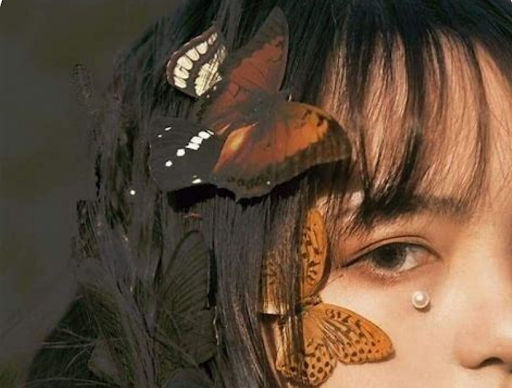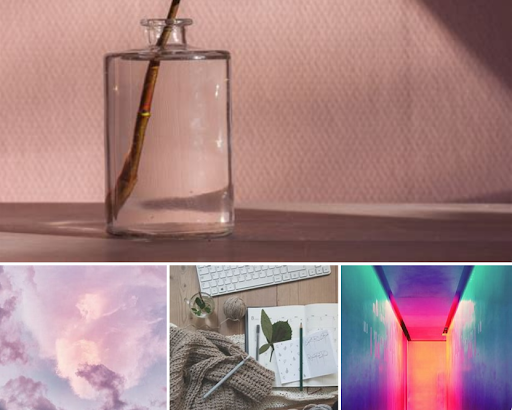As a photographer, understanding the essence of aesthetic photography is crucial to create visually compelling and meaningful images. Aesthetic photography goes beyond capturing a scene; it is about evoking emotions, telling stories, and creating a visual experience for the viewer. Aesthetic photography aims to capture beauty in all its forms, whether it’s found in nature, architecture, people, or everyday objects. It’s about seeking and capturing the extraordinary in the ordinary, and this requires a keen eye for detail and an appreciation for the aesthetics of the world around us.
To excel in aesthetic photography, it is crucial to grasp the elements that contribute to its appeal, incorporating innovative aesthetic photography ideas. This involves mastering composition, lighting, color, and storytelling. Composition, a pivotal aspect of aesthetic photography, dictates how elements within the frame interact with each other. Exploring aesthetic photography ideas such as the rule of thirds, leading lines, and framing can markedly elevate the visual impact of your photographs. Furthermore, the manipulation and skillful utilization of natural light, coupled with the deliberate selection of colors, play a vital role in crafting a mood and atmosphere in your images.
In essence, aesthetic photography is about capturing the essence of beauty and emotion in a single frame. It’s about freezing a moment in time that not only pleases the eye but also stirs the soul. By understanding the core principles of aesthetic photography, one can embark on a journey to master the art of visually storytelling through their images.
Importance of Creativity in Aesthetic Photography
Creativity is the lifeblood of aesthetic photography. It’s what sets apart a mundane snapshot from a captivating piece of art. In the realm of aesthetic photography, creativity is not limited to the subject being photographed but extends to the photographer’s vision, imagination, and ability to see the world through a unique lens. It’s about finding beauty in unexpected places, uncovering hidden narratives, and presenting them in a way that sparks curiosity and emotion in the viewer.
When it comes to aesthetic photography, creativity is not just about thinking outside the box; it’s about reimagining the box altogether. It’s about experimenting with different perspectives, angles, and techniques to breathe life into your images. This could involve unconventional framing, juxtaposition of elements, or playing with depth of field to create a sense of mystery and intrigue. Creativity also encompasses the ability to infuse personal style and flair into your photography, making each image a reflection of your artistic identity.
Furthermore, embracing creativity in aesthetic photography means being open to constant exploration and learning. It’s about staying curious, being inspired by the world around you, and translating that inspiration into captivating visual stories. Ultimately, creativity is the driving force behind the evolution and innovation of aesthetic photography.
15 Creative Ideas for Aesthetic Photography
Macro Photography Magic: Explore the intricate details and textures of everyday objects up close, revealing a world unseen by the naked eye. Capture the delicate patterns of a flower petal, the glistening droplets of morning dew, or the intricate structure of a butterfly’s wing.
Minimalist Compositions: Embrace simplicity by focusing on a single subject against a clean, uncluttered background. Utilize negative space to draw attention to the subject and evoke a sense of calm and elegance.
Silhouette Stories: Experiment with capturing striking silhouettes against dramatic backdrops during sunrise or sunset, using the interplay of light and shadow to convey powerful emotions and narratives.
Reflections and Symmetry: Seek out reflective surfaces such as still waters, glass windows, or polished floors to create captivating symmetrical compositions that add depth and visual interest to your photographs.
Monochromatic Marvels: Explore the timeless elegance of black and white photography, emphasizing contrast, texture, and form to create visually impactful and emotive images.
Whimsical Double Exposures: Merge two distinct scenes or subjects in-camera to craft dreamlike and surreal visuals that invite viewers to interpret and appreciate the interconnectedness of the elements.

Urban Geometry: Capture the architectural marvels of urban landscapes, emphasizing lines, patterns, and geometric shapes to create visually dynamic and thought-provoking compositions.
Vibrant Street Scenes: Immerse yourself in the vibrant energy of bustling city streets, capturing candid moments and interactions that reflect the diverse tapestry of human experiences and emotions.
Enchanting Nightscapes: Embrace the magic of low-light photography to capture the ethereal beauty of city skylines, starry skies, or illuminated landmarks, painting mesmerizing scenes with light and color.
Ethereal Portraits: Experiment with soft, diffused lighting and natural elements to create enchanting and emotive portraits that evoke a sense of intimacy and vulnerability.
Nature’s Textures: Venture into the great outdoors to capture the intricate textures of rocks, leaves, bark, or feathers, highlighting the rich tactile details that define the natural world.
Dramatic Weather Elements: Embrace the power and beauty of nature’s elements by capturing the drama of stormy skies, swirling mists, or cascading rain, conveying the raw energy and unpredictability of weather.
Candid Storytelling: Document candid moments of everyday life, capturing authentic emotions, interactions, and expressions that reveal the essence of human experiences and connections.
Fantastical Levitation: Experiment with levitation photography to create whimsical and surreal scenes where subjects appear to defy gravity, adding a touch of magic and wonder to your images.
Experimental Lens Techniques: Explore the creative possibilities of lens manipulation, such as freelensing, lens whacking, or using prisms and filters to add unique and captivating visual effects to your photographs.
How to Enhance Your Aesthetic Photography Skills
Enhancing your aesthetic photography skills goes beyond mastering technical aspects; it involves honing your artistic vision, storytelling abilities, and creative intuition. Here are some strategies to elevate your aesthetic photography skills:
- Utilizing Natural Light in Aesthetic Photography
Harnessing the power of natural light is essential in creating captivating aesthetic photographs. Understanding the nuances of light, its direction, quality, and intensity can transform an ordinary scene into a mesmerizing visual narrative. Whether it’s the soft, golden light of sunrise or the warm, diffused glow of sunset, being attuned to the ever-changing qualities of natural light can elevate the mood and atmosphere of your images.
- Incorporating Props and Elements for Visual Interest
Introducing carefully selected props and elements into your compositions can add layers of visual interest and storytelling. Whether it’s a vintage book, a bouquet of wildflowers, or an intriguing piece of architecture, props can serve as anchors that guide the viewer’s gaze and enhance the narrative within your photographs.
- Editing Techniques to Elevate Your Aesthetic Photography
Post-processing plays a significant role in refining the aesthetic appeal of your photographs. Experimenting with editing tools and techniques, such as adjusting contrast, color grading, and selective cropping, can help you convey the desired mood and aesthetic sensibilities in your images. However, it’s important to strike a balance between enhancing the visual impact and preserving the authenticity of the captured moment.
- Showcasing Emotion and Storytelling through Aesthetic Photography
Aesthetic photography is inherently linked to the art of storytelling. By infusing your images with genuine emotions, narrative elements, and a sense of purpose, you can create a visual narrative that resonates with the viewer on a deeper level. Whether it’s capturing fleeting moments of joy, contemplative solitude, or compelling human interactions, the ability to convey emotion and tell stories through your photographs is a powerful skill to cultivate.
- Aesthetic Photography Composition and Framing Tips
Mastering the art of composition and framing is essential in creating visually compelling aesthetic photographs. By understanding the principles of balance, symmetry, leading lines, and the rule of thirds, you can guide the viewer’s gaze and create harmonious visual arrangements that draw them into the narrative of your images.
Utilizing Natural Light in Aesthetic Photography
Natural light is a powerful and versatile tool for enhancing the aesthetic appeal of your photographs. Whether you’re capturing the soft, warm glow of sunrise, the vibrant hues of golden hour, or the gentle diffused light of an overcast day, understanding how to harness natural light can elevate the mood, atmosphere, and visual impact of your images.
Embracing Golden Hour Magic
The golden hour, encompassing the period just after sunrise and just before sunset, bathes the world in a warm, soft light that adds a magical quality to your photographs. During this time, the low angle of the sun creates long, gentle shadows and imparts a rich, golden hue to the surroundings, enhancing textures and creating a captivating play of light and shadow.
Harnessing Soft, Diffused Light
On overcast or cloudy days, the soft, diffused light creates a gentle and even illumination that is ideal for capturing subtle details and creating a serene atmosphere in your photographs. This type of light minimizes harsh shadows and highlights, allowing you to emphasize textures, colors, and delicate nuances within the scene.
Understanding Directional Light
The direction from which light falls on your subject can significantly impact the mood and visual dynamics of your photographs. Whether it’s front lighting that illuminates the entire scene, side lighting that creates depth and dimension, or backlighting that adds a sense of drama and atmosphere, being aware of light direction allows you to sculpt the visual narrative according to your creative vision.
Embracing the Play of Shadows
Shadows are an integral part of the interplay between light and dark in aesthetic photography. They can add depth, intrigue, and a sense of mystery to your images. By strategically incorporating shadows into your compositions, you can create visually dynamic and thought-provoking scenes that engage the viewer’s imagination and emotions.
In essence, mastering the utilization of natural light in aesthetic photography involves being attuned to the ever-changing qualities of light, understanding its impact on mood and atmosphere, and leveraging its transformative power to create visually compelling and emotive images.
Conclusion
In general, aesthetic photography is an art form that seeks to capture the essence of beauty and emotion, transcending the mere documentation of scenes. It involves various elements such as composition, lighting, color, and storytelling, aiming to create a visually pleasing and meaningful photographic experience. In aesthetic photography, creativity is paramount, manifesting not only in the subject being photographed but also extending to the photographer’s vision, imagination, and unique perspective. Creative photography involves finding beauty in unexpected places, revealing hidden narratives, and presenting them in a way that sparks curiosity and emotion.






















